Acer Predator Helios 300 (G3-571, GTX 1060) review – Acer’s affordable GTX 1060-powered notebook

At first, you may think that Acer is offering the same hardware in different packages since there are three different Acer models with GTX 1060 but all of them are priced differently and have a different target audience. The Aspire V 15 and V 17 Nitro BE notebooks, for example, are not gaming-oriented anymore. They provide just about the same performance as the Predator lineup but try to appeal to a more sophisticated type of user looking for extra power on the go without sacrificing portability. The Predator 17 G5-793G, on the other hand, offers a superior cooling solution with some extra features like G-Sync and a display with higher refresh rate. Also, the price is considerably higher. So here comes the middle ground – the Predator Helios 300. We were able to get an early sample of the 15-inch model with GTX 1060, which is not only more reasonably priced but it’s also more portable than the Predator 17 (G5-793) and has a more gaming-centric appearance compared to the V 15 Nitro BE.
The starting price of this machine is around $1 099 and offers just about everything you’d need from a 15-inch gaming laptop – Intel Core i7-7700HQ, NVIDIA GeForce GTX 1060 with 6GB of GDDR5 VRAM, up to 32GB of DDR4-2400 memory, 2.5-inch HDD plus another M.2 PCIe NVMe-enabled SSD slot, IPS display, aggressive design with red accents and brushed aluminum as main material and a keyboard suitable for gaming. What’s lacking and what are the trade-offs here? Let’s see in the full review down below.
You can find the available configurations here: http://amzn.to/2rFFJT9
Contents
- In 2 minutes…
- Retail package
- Design and construction
- Disassembly, maintenance and upgrade options
- Display quality
- PWM (Screen flickering)
- Buy our display profiles
- Specs sheet
- Software
- Battery
- CPU – Intel Core i7-7700HQ
- GPU – NVIDIA GeForce GTX 1060 (6GB GDDR5)
- Gaming tests and performance
- Temperatures
- Early verdict
In 2 minutes…
We know that many of you don’t have enough time to read our in-depth tests so we made a 2-minute recap of the most important things. Enjoy!
Retail package
The Predator Helios 300 comes in an identical to the rest of the Predator laptops package – luxurious black box with all the usual user manuals, AC adapter and a power cord.
Design and construction
At first, the laptop resembles its considerably more affordable sibling, Acer Aspire VX 15, but the building materials are largely different. Interestingly enough, though, the chassis isn’t much beefier tipping the scale at 2.58 kg and a thickness of around 26 mm it’s actually thinner than the VX 15.
Although the notebook’s design isn’t any special or ground-breaking, we found it to be quite sturdy and reliable in most cases. The lid, for example, offers a standard brushed aluminum sheet with a plastic patterned element on the top, probably for the Wi-Fi antennas. The material itself appears to be fairly sturdy – when pressing the middle, the surface bends ever so slightly and doesn’t cause ripples to appear on the LCD screen. However, the material is prone to fingerprints and smudges, as usual. The hinges provide smooth opening with one hand and satisfying linear travel but due to fact that they are spaced apart, the center of the bottom bezel is unsupported and can be twisted easily. The bottom side incorporates black, roughened plastic with some grills for intake and two small service hatches for easier memory and storage upgrade.
The sides provide the bare minimum of I/O but at least the connectors are distributed evenly on both sides. The right side accommodates the RJ-45, USB-C 3.1 (probably Gen 1), HDMI, SD card reader and a standard USB 3.0 connector. On the right, you will find only the 3.5 mm audio jack, two USB 2.0 connectors and the DC charging port. On the back, you will see the iconic heat dispersing grills with red accent but if you look closely, only the left side provides real vent openings while the right side serves only as aesthetic purpose.
Opening the laptop reveals somehow familiar interior – brushed aluminum surface with chamfered edges around the trackpad and the sides. Not only does it look stylish but it’s also really rigid. Pressing the palm rest area and the center of the keyboard doesn’t cause the material to bend. Anyway, the keyboard appears to be identical to the one on the VX 15 which isn’t necessarily a bad thing. The keys provide tactile clicky feedback while the keycaps are slightly concaved for extra comfort while typing. We would have appreciated a slightly deeper travel, though. There are also the usual media control keys above the Numpad area and the arrow keys are full-sized but not well-separated. And as for the touchpad – it’s accurate, responsive and registers mouse clicks accordingly. Still, they feel a bit stiff while the gliding surface isn’t the best we’ve seen.
All in all, the Helios 300 is a well-built 15-inch gaming laptop that isn’t too heavy and big to carry around, has decent input devices and appears to be pretty sturdy with good choice of materials. We definitely recommend it in this price range if the above-mentioned properties are of great importance to you.
Disassembly, maintenance and upgrade options
The notebook’s bottom piece offers two service hatches but they give you access only to the two RAM slots and the HDD. You will have to dig deeper for the rest of the components such as the M.2 SSD.
Storage upgrades – 2.5-inch HDD/SSD, M.2 SSD
As usual, the notebook offers the standard 2.5-inch HDD and an M.2 PCIe NVMe SSD. Both slots came full in our sample – the HDD is manufactured by Toshiba while the M.2 PCIe NVMe SSD is Intel’s 600P series with 512GB capacity, 2280 in size.
| Slot | Unit | Upgrade price |
|---|---|---|
| M.2 slot | 512GB Intel 600P Series M.2 PCIe NVMe SSD (2280) | Upgrade options |
| 2.5-inch HDD/SSD | Toshiba 1TB HDD | Upgrade options |
RAM
One of the service lids gives easy access to the RAM slots. In our case, both are taken by a 16GB DDR4-2400 Kingston chip each.
| Slot | Unit | Upgrade price |
|---|---|---|
| Slot 1 | 16GB Kingston DDR4-2400 | Upgrade options |
| Slot 2 | 16GB Kingston DDR4-2400 | Upgrade options |
Other components
The Wi-Fi card can be found next to the cooling fan (with the bottom of the chassis facing up) and it’s Intel 7265NGW.
The laptop uses a relatively big 48Wh battery located under the wrist rest area.
Cooling system
The cooling design is unusual given the powerful hardware inside and raises some concerns about its effectiveness. Both cooling fans are stuck together and are connected via three heat pipes going across two heatsinks. We’ve seen similar design in the Lenovo Legion Y520 and we weren’t happy with its performance. We will see if this one does any better.
Display quality
The Helios 300 sample we’ve tested features a budget IPS panel with Full HD (1920×1080) resolution manufactured by LG with model number LP156WF6-SPK6. The pixel density is the usual for a 15-inch panel – 142 ppi while the pixel pitch is 0.18 x 0.18 mm. The screen can be considered as “Retina” when viewed from a distance equal or greater than 60 cm.
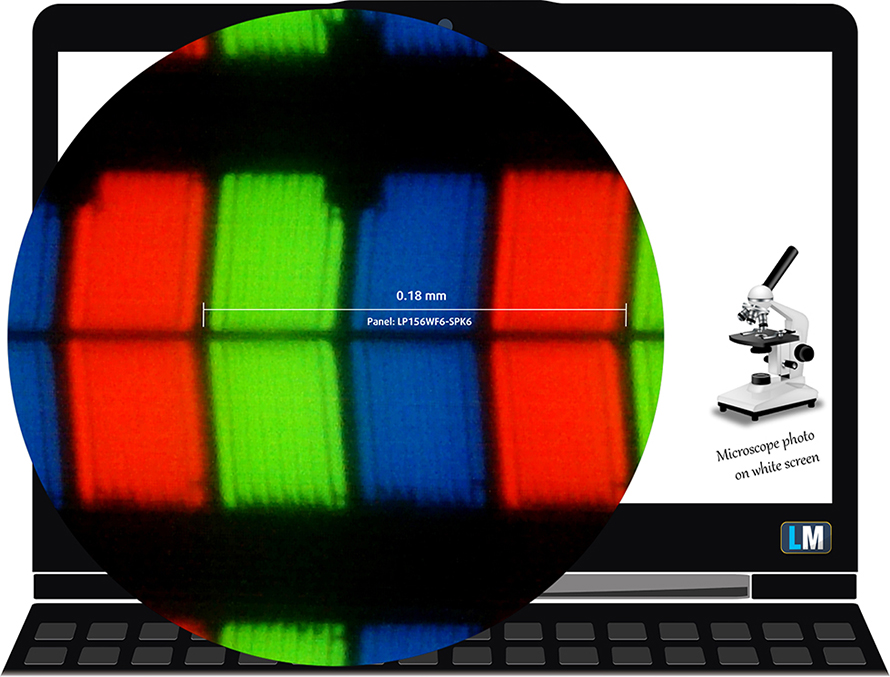
Viewing angles are good since the display incorporates an IPS panel.

We were able to measure a maximum brightness of 289 cd/m2 in the center of the panel and 273 cd/m2 as average across the surface with just 10% deviation.
Below, you can see the color temperature at 140 cd/m2 (44% brightness in this case) and as you scroll lower, you will see the color temperature that we’ve measured across all brightness levels. At 140 cd/m2, the panel has slightly colder than usual color temperature – 6900K but between 30% and 90% white, the color temperature is optimal – 6500K.
The color deviation dE2000 compared to the center of the screen is just 2.3 – a good result since values above 4.0 are unwanted. The contrast ratio is high – 1080:1.
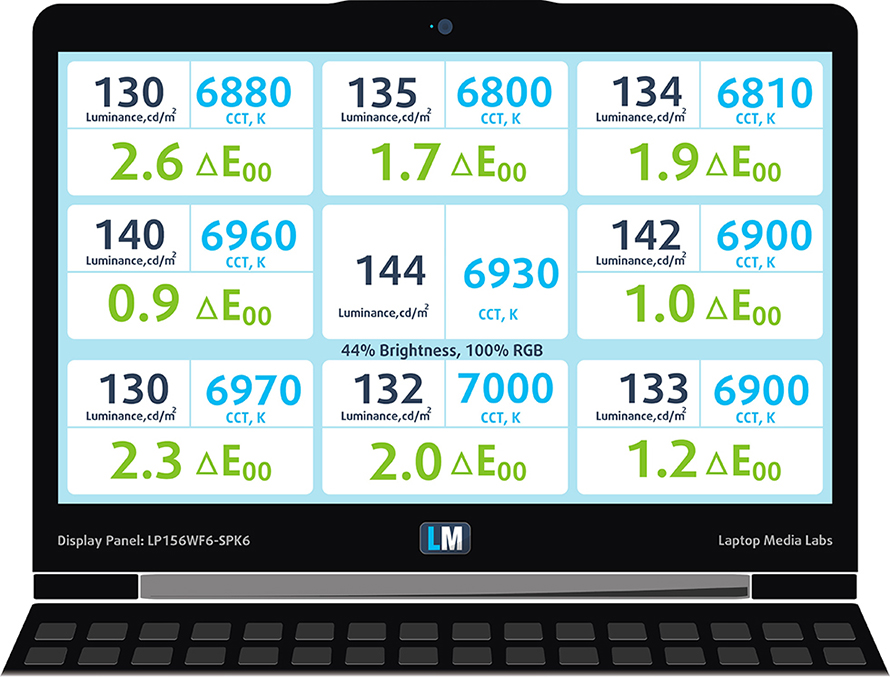
Color reproduction
To make sure we are on the same page, we would like to give you a little introduction of the sRGB color gamut and the Adobe RGB. To start, there’s the CIE 1976 Uniform Chromaticity Diagram that represents the visible specter of colors by the human eye, giving you a better perception of the color gamut coverage and the color accuracy.
Inside the black triangle, you will see the standard color gamut (sRGB) that is being used by millions of people in HDTV and on the web. As for the Adobe RGB, this is used in professional cameras, monitors etc for printing. Basically, colors inside the black triangle are used by everyone and this is the essential part of the color quality and color accuracy of a mainstream notebook.
Still, we’ve included other color spaces like the famous DCI-P3 standard used by movie studios, as well as the digital UHD Rec.2020 standard. Rec.2020, however, is still a thing of the future and it’s difficult for today’s displays to cover that well. We’ve also included the so-called Michael Pointer gamut, or Pointer’s gamut, which represents the colors that naturally occur around us every day.
Unfortunately, the display covers just 54% of the sRGB gamut so it lacks almost half of the colors used on the web and in HDTV.
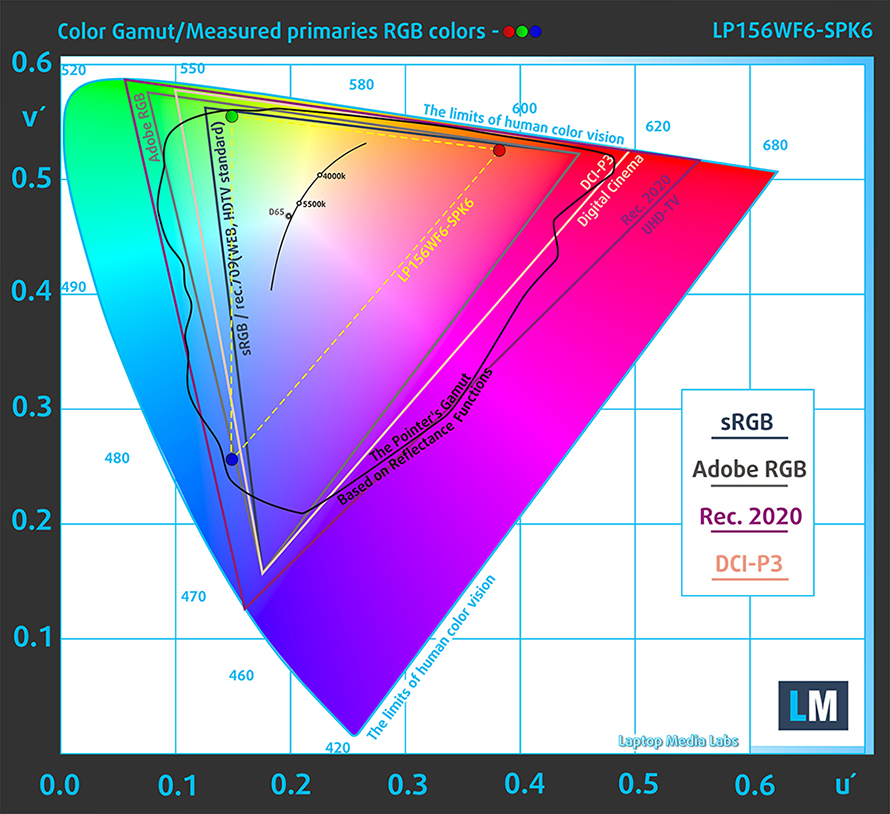
Below you will see practically the same image but with the color circles representing the reference colors and the white circles being the result. You can see main and additional colors with 25%, 50%, 75% and 100% saturation inside the sRGB gamut pre and post calibration.
The “Design and Gaming” profile is created at 140 cd/m2 brightness, D65 (6500K) white point and optimal gamma in sRGB mode.
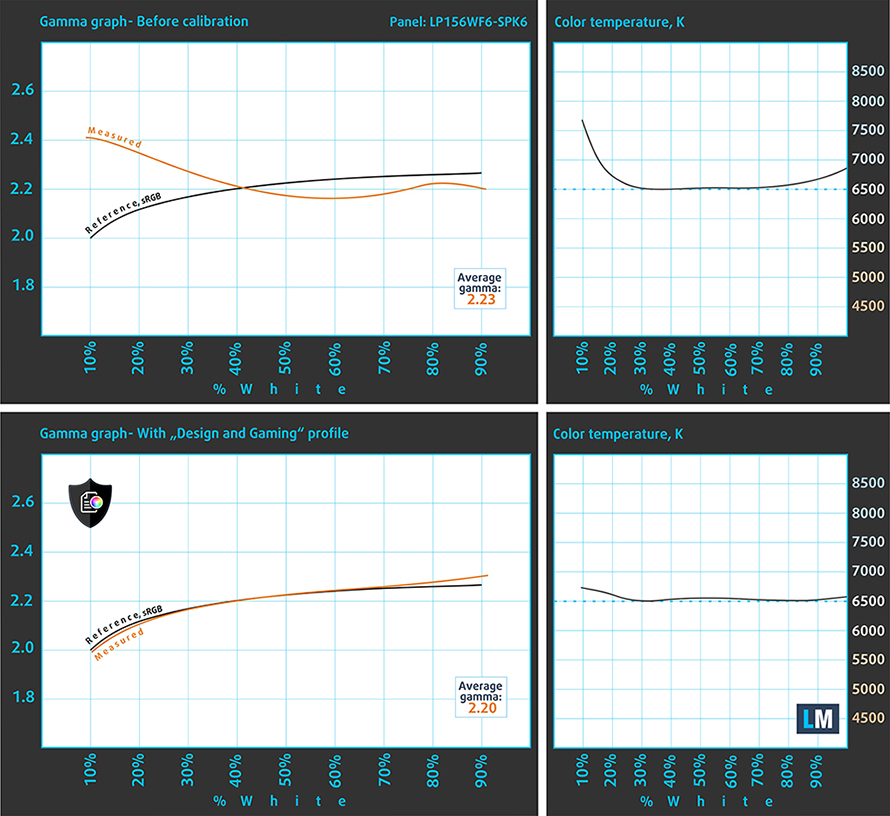
We tested the accuracy of the display with 24 commonly used colors like light and dark human skin, blue sky, green grass, orange etc. You can check out the results at factory condition and also, with the “Design and Gaming” profile.
The next figure shows how well the display is able to reproduce really dark parts of an image, which is essential when watching movies or playing games in low ambient light.
The left side of the image represents the display with stock settings, while the right one is with the “Gaming and Web Design” profile activated. On the horizontal axis, you will find the grayscale and on the vertical axis – the luminance of the display. On the two graphs below you can easily check for yourself how your display handles the darkest nuances but keep in mind that this also depends on the settings of your current display, the calibration, the viewing angle and the surrounding light conditions.
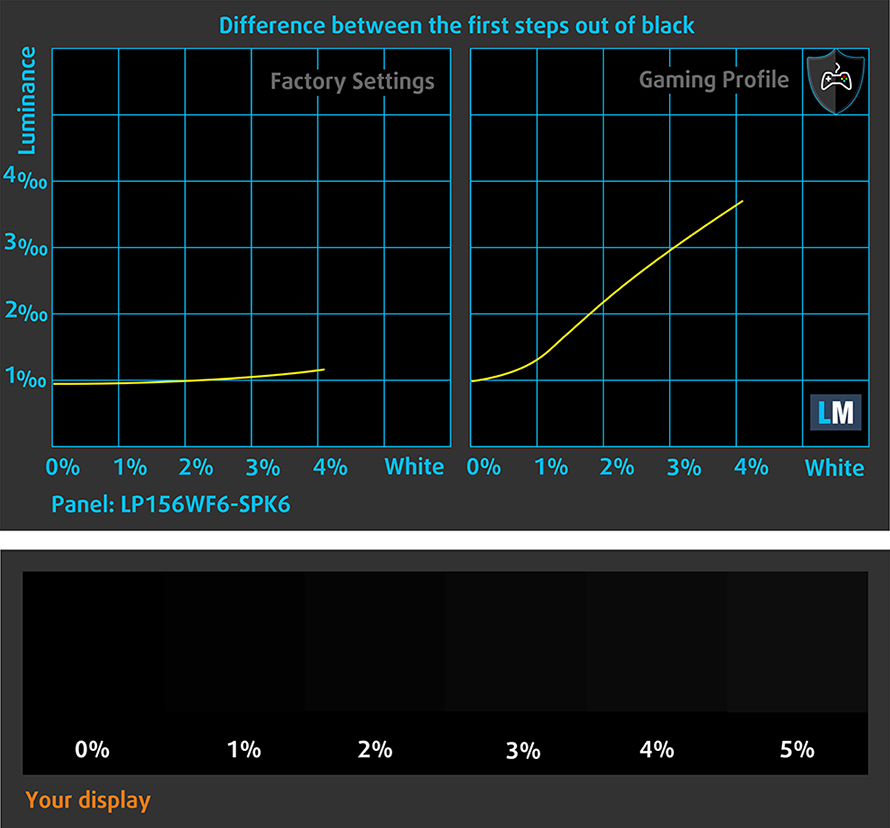
Gaming capabilities (Response time)
We test the reaction time of the pixels with the usual “black-to-white” and “white-to-black” method from 10% to 90% and reverse.
We recorded Fall Time + Rise Time = 23 ms.

PWM (Screen flickering)
Pulse-width modulation (PWM) is an easy way to control monitor brightness. When you lower the brightness, the light intensity of the backlight is not lowered, but instead turned off and on by the electronics with a frequency indistinguishable to the human eye. In these light impulses the light/no-light time ratio varies, while brightness remains unchanged, which is harmful to your eyes. You can read more about that in our dedicated article on PWM.
We are happy to report that the panel is PWM-free so it’s safe to use across all brightness levels.
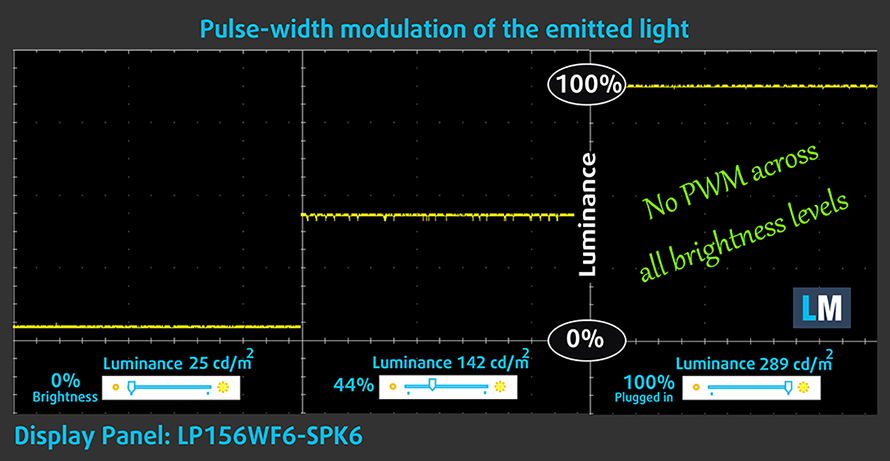
Blue light emissions
Installing of our Health-Guard profile not only eliminates PWM but also reduces the harmful Blue Light emissions while keeping the colors of the screen perceptually accurate. If you’re not familiar with the Blue light, the TL;DR version is – emissions that negatively affect your eyes, skin, and your whole body. You can find more information about that in our dedicated article on Blue Light.
You can see the levels of emitted blue light on the spectral power distribution (SDP) graph.
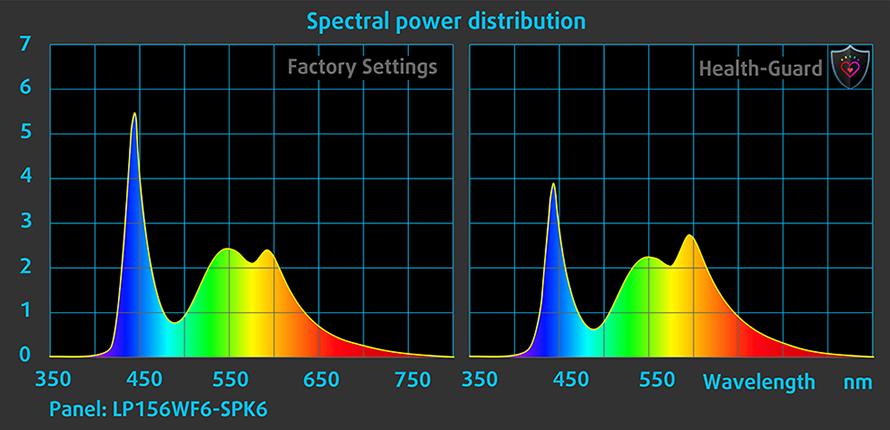
Conclusion
To be honest, we were expecting a completely different panel with much better sRGB coverage and higher maximum brightness. Instead, we got a budget IPS panel comparable to the one found in the considerably cheaper Acer Aspire VX 15. At this point, you are better off with the Acer Aspire V 15 Nitro BE (VN7-593G), although the latter costs more than the Helios 300. It really depends on how much you value screen quality.
The good news, however, is that the display doesn’t use PWM for regulating screen brightness so it can be used for extended periods of time by people with sensitive eyes. Also, our custom profiles make the panel a little bit better for gaming and multimedia.
Buy our display profiles
Since our profiles are tailored for each individual display model, this article and its respective profile package is meant for Acer Pedator Helios 300 configurations with 15.6″ LG LP156WF6-SPK6 (FHD, 1920 × 1080) IPS screen and the laptop can be found at Amazon: http://amzn.to/2sX0NbU
*Should you have problems with downloading the purchased file, try using a different browser to open the link you’ll receive via e-mail. If the download target is a .php file instead of an archive, change the file extension to .zip or contact us at [email protected].
Read more about the profiles HERE.
In addition to receiving efficient and health-friendly profiles, by buying LaptopMedia's products you also support the development of our labs, where we test devices in order to produce the most objective reviews possible.

Office Work
Office Work should be used mostly by users who spend most of the time looking at pieces of text, tables or just surfing. This profile aims to deliver better distinctness and clarity by keeping a flat gamma curve (2.20), native color temperature and perceptually accurate colors.

Design and Gaming
This profile is aimed at designers who work with colors professionally, and for games and movies as well. Design and Gaming takes display panels to their limits, making them as accurate as possible in the sRGB IEC61966-2-1 standard for Web and HDTV, at white point D65.

Health-Guard
Health-Guard eliminates the harmful Pulse-Width Modulation (PWM) and reduces the negative Blue Light which affects our eyes and body. Since it’s custom tailored for every panel, it manages to keep the colors perceptually accurate. Health-Guard simulates paper so the pressure on the eyes is greatly reduced.
Get all 3 profiles with 33% discount
Specs sheet
The current specs sheet refers to this particular model – configurations may differ depending on your region.
| CPU | Intel Core i7-7700HQ (4-core, 2.80 – 3.80 GHz, 6MB cache) |
|---|---|
| RAM | 16GB (2x 8096MB) – DDR4, 2400MHz |
| GPU | NVIDIA GeForce GTX 1060 (6GB GDDR5) |
| HDD/SSD | 1TB HDD + 256GB M.2 PCIe NVMe SSD |
| Display | 15.6-inch – 1920×1080 (Full HD) IPS, matte |
| Optical drive | – |
| Connectivity | LAN 10/100/1000 Mbps, Wi-Fi 802.11ac (2×2), Bluetooth 4.0 |
| Other features |
|
| Battery | 48Wh |
| Thickness | 27.94 mm (1.1″) |
| Weight | 2.7 kg (5.95 lbs) |
Software
For the writing of this review, we used the pre-installed Windows 10 (64-bit) but if you wish to perform a clean install of the OS without the bloatware, we suggest downloading all of the latest drivers from Acer’s official support page.
Battery
Since we got a pretty early engineering sample, we weren’t able to test the battery life so we will do that in the near future when we get a good sample or end-production unit.
CPU – Intel Core i7-7700HQ
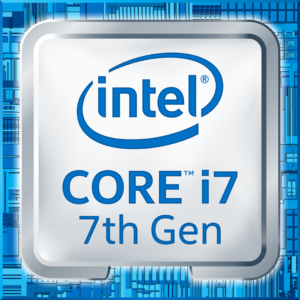 The Core i7-7700HQ is Kaby Lake’s top-shelf direct successor of the Skylake Core i7-6700HQ offering slightly higher clock speeds on the almost identical architecture and TDP. While Intel markets Kaby Lake’s architecture as “14nm+”, the Core i7-7700HQ is still on the same 14nm node with the only significant update being in the iGPU department. That’s why the slightly altered clock speeds (2.8 – 3.8 GHz vs 2.6 – 3.5 GHz) bring not more than 10% increase in performance compared to the Core i7-6700HQ. We still have the supported Hyper-Threading technology with 4/8 – core/thread design, the same 45W TDP and 6MB cache.
The Core i7-7700HQ is Kaby Lake’s top-shelf direct successor of the Skylake Core i7-6700HQ offering slightly higher clock speeds on the almost identical architecture and TDP. While Intel markets Kaby Lake’s architecture as “14nm+”, the Core i7-7700HQ is still on the same 14nm node with the only significant update being in the iGPU department. That’s why the slightly altered clock speeds (2.8 – 3.8 GHz vs 2.6 – 3.5 GHz) bring not more than 10% increase in performance compared to the Core i7-6700HQ. We still have the supported Hyper-Threading technology with 4/8 – core/thread design, the same 45W TDP and 6MB cache.
However, the Kaby Lake generation boasts an updated video engine for the iGPU, although, its performance is just about the same. Branded as Intel HD Graphics 630, the GPU offers slightly higher clock speeds (350 – 1100 MHz vs 350 – 1050 MHz) compared to the Intel HD Graphics 530 and support for H265/HEVC Main10 profile at 10-bit color depth and the VP9 codec for full hardware acceleration. In addition, the HDCP 2.2 is also supported allowing Netflix’s 4K video streaming.
You can browse through our top CPUs ranking: http://laptopmedia.com/top-laptop-cpu-ranking/
Here you will find other useful information and every notebook we’ve tested with this processor: http://laptopmedia.com/processor/intel-core-i7-7700hq/
GPU – NVIDIA GeForce GTX 1060 (6GB GDDR5)
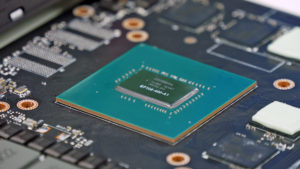 NVIDIA’s GeForce GTX 1060 GPU aims to be the mid-tier graphics card from the Pascal generation offering similar or even better performance than last year’s flagship models like the GTX 970M and 980M. However, the GPU will be used in high-end laptop configurations.
NVIDIA’s GeForce GTX 1060 GPU aims to be the mid-tier graphics card from the Pascal generation offering similar or even better performance than last year’s flagship models like the GTX 970M and 980M. However, the GPU will be used in high-end laptop configurations.
The graphics card is based on the GP106 chip built on the 16nm FinFET manufacturing process from TSMC paired with up to 6GB GDDR5 VRAM clocked at 8000 MHz effective on a 192-bit interface. The GPU also features the same amount of CUDA cores as its desktop counterpart (1280) and it’s clocked at slightly lower frequencies – 1404 – 1670 MHz.
Depending on the cooling solution, the GPU can be found in large 17 and 15-inch notebooks but some slimmed-down 14-inch notebooks are also an option. The TDP of the GPU is somewhat lower than the last generation GTX 970M.
You can browse through our top GPUs ranking: http://laptopmedia.com/top-laptop-graphics-ranking/
Here you will find other useful information and every notebook we’ve tested with this GPU: http://laptopmedia.com/video-card/nvidia-geforce-gtx-1060-6gb-gddr5/
Gaming tests and performance
Since the unit we got from Acer was faulty (too early engineering sample), we weren’t able to test the performance as well. However, since it features exactly the same hardware configuration as the Acer Aspire V 15 Nitro BE (VN7-593G), we are almost certain that the results from the synthetic benchmarks and gaming tests will be almost identical. So we suggest that you visit our review of the Aspire V 15 Nitro for more information and in the meantime, we will try to snatch a better representative of the Helios 300.
Temperatures
It’s too early to tell whether or not the cooling design is appropriate given the powerful hardware but we do have some suspicion of its reliability due to the impractical fan placement. We’ve already tested a few models with similar cooling design in the past, including the previous generation of the HP Omen 15 and the recently reviewed Lenovo Legion Y520, and they had trouble keeping up with the GTX 1050 Ti. We hope, however, things will be different here although we are skeptical because the GTX 1060 is significantly more demanding.
Early verdict
For now, we will give an early verdict of the notebook’s design, build quality and screen since these are the only things we were able to test for now. We will update the review as soon as we get a decent sample.
Anyway, in terms of design, the notebook is in line with the Predator lineup and features aluminum and plastic in its build. The chassis itself appears to be sturdy and slightly heavier than expected but still more portable than the Lenovo Legion Y720. This is kind of expected since the latter uses mainly aluminum.
Connectivity options might be an issue for some because there’s only one standard USB 3.0 port while the USB-C connector is Gen 1 supporting only up to 5 Gbps bandwidth. Yet, this might not be the main issue, or a deal-breaker, for most users. The screen most definitely will. The laptop is priced right under the Aspire V 15 Nitro Black Edition and is expected to have some trade-offs but we wished the screen isn’t one of them. The budget IPS panel delivers poor sRGB coverage and low maximum brightness making the whole gaming experience less beckoning on the go.
For now, we can’t comment on the rest of the aspects until we wait for the next sample to arrive.
You can find the available configurations here: http://amzn.to/2rFFJT9
Pros
- Sturdy build
- Fairly portable compared to its competitors
- The screen doesn’t use PWM across all brightness levels
- Well-priced
Cons
- IPS panel with narrow sRGB coverage and low maximum brightness
- Lack of additional USB 3.0 connectors and no USB-C Gen 2 or Thunderbolt support
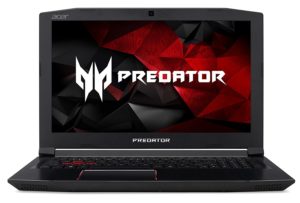
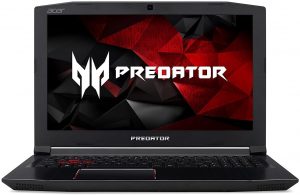
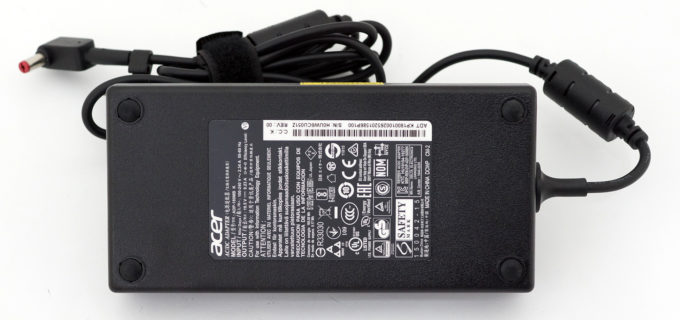
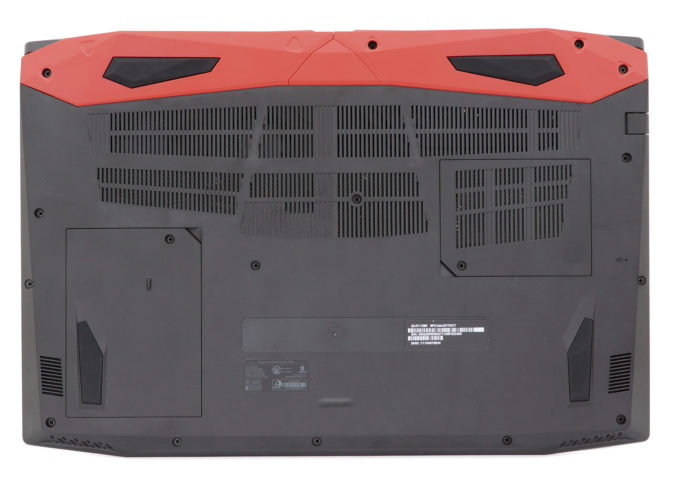
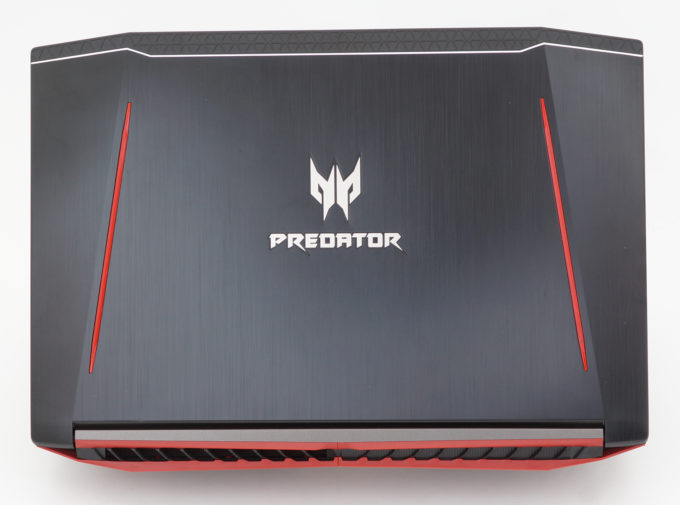
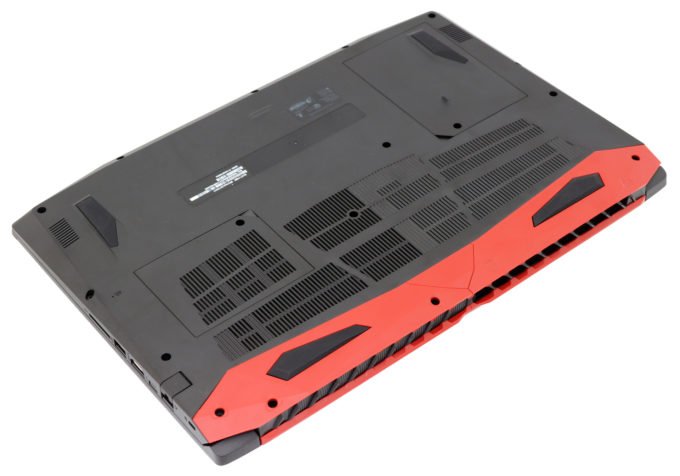
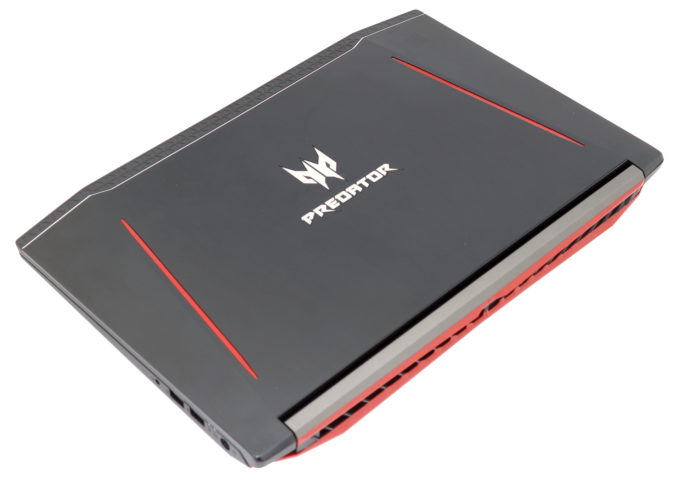




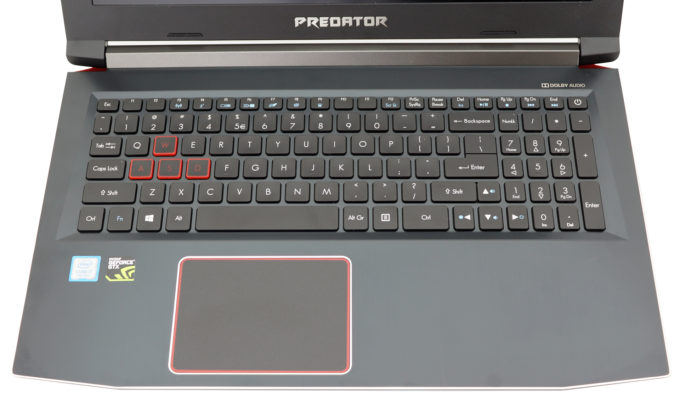

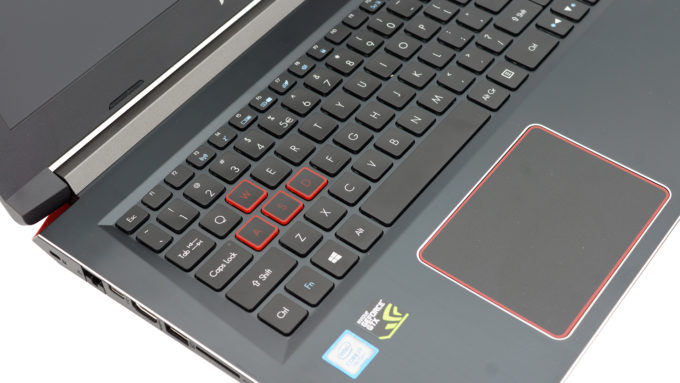
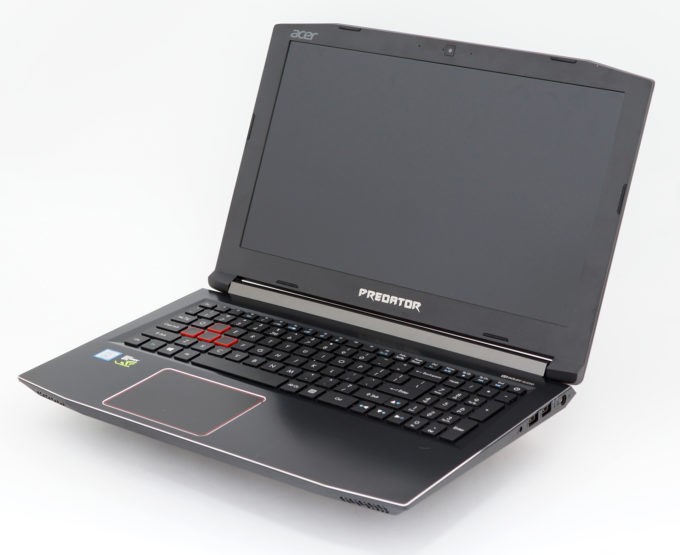

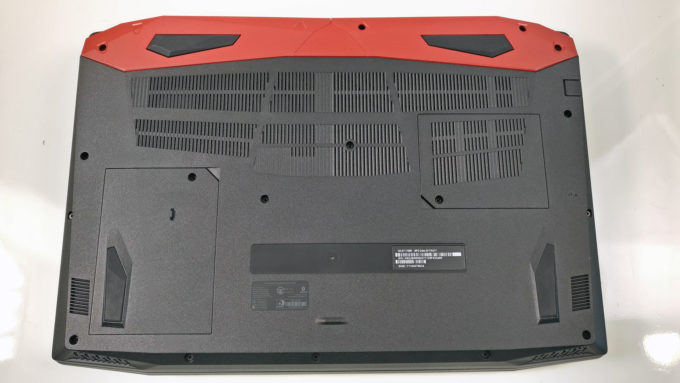
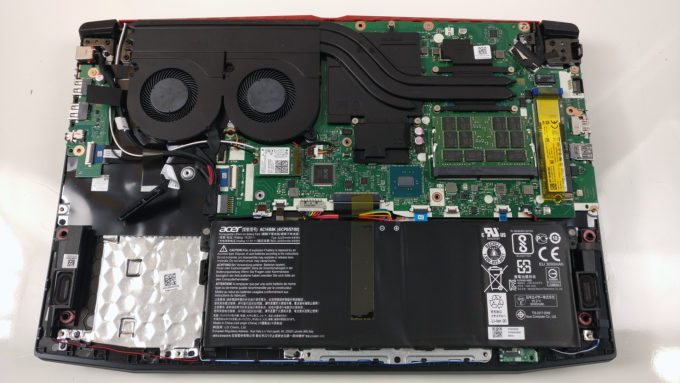
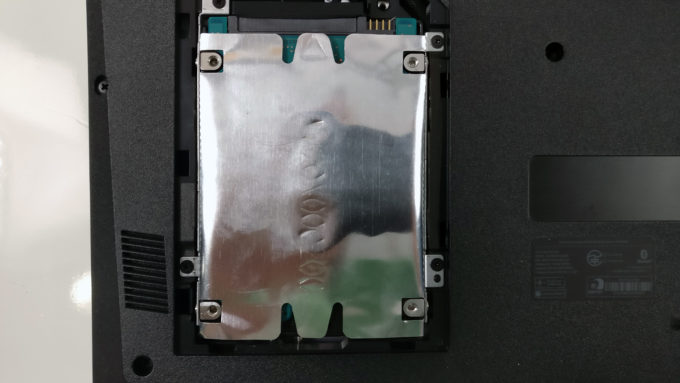
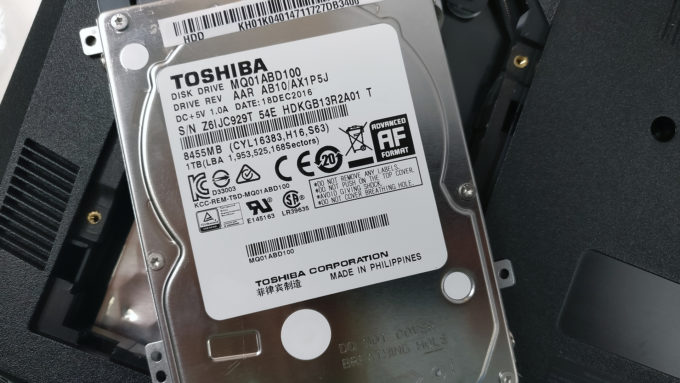
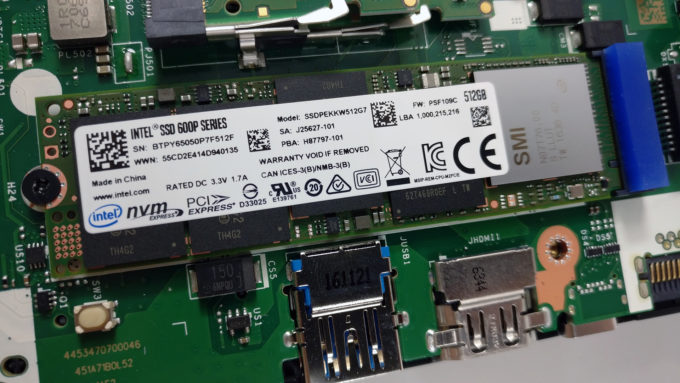
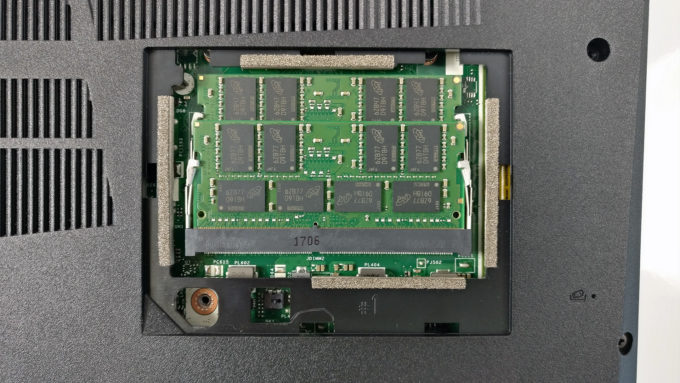
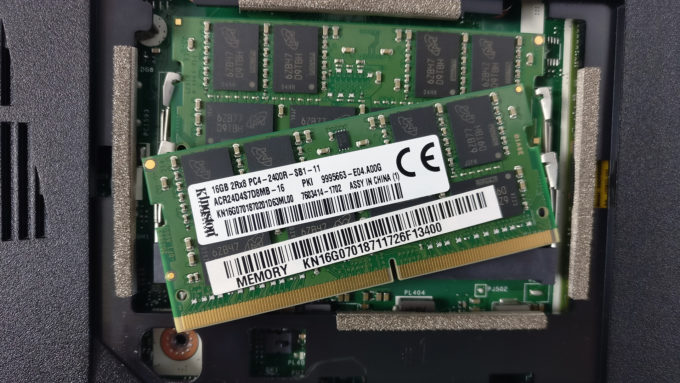
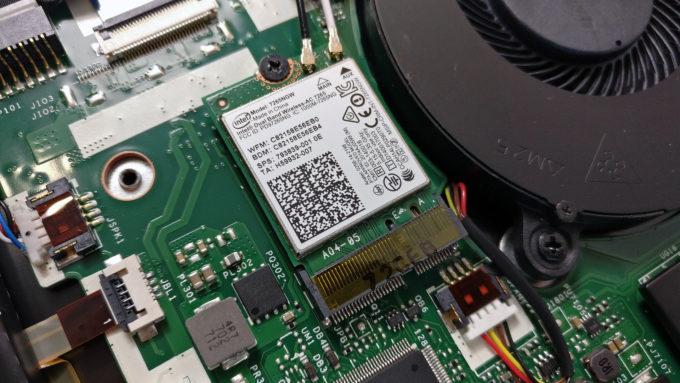
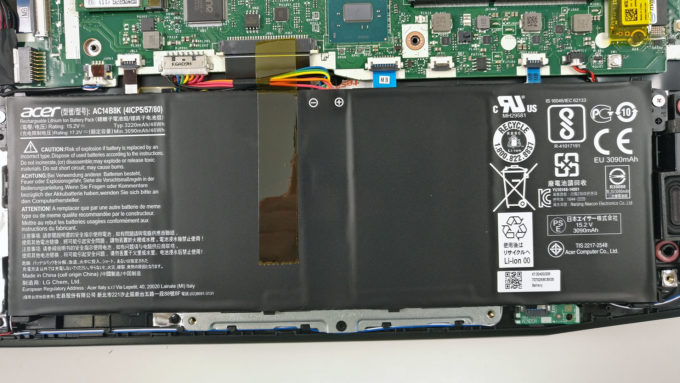
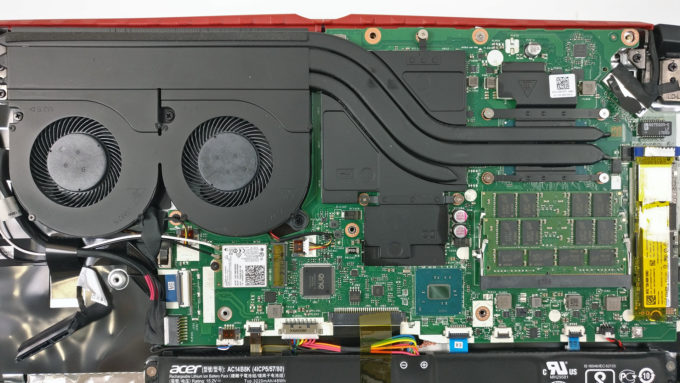

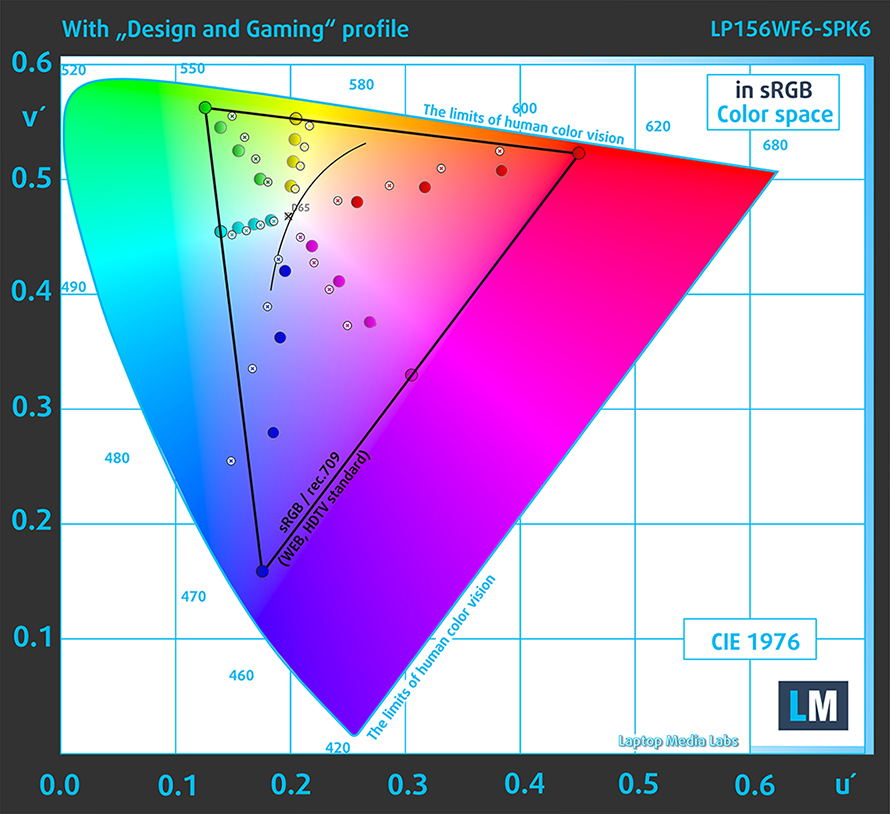

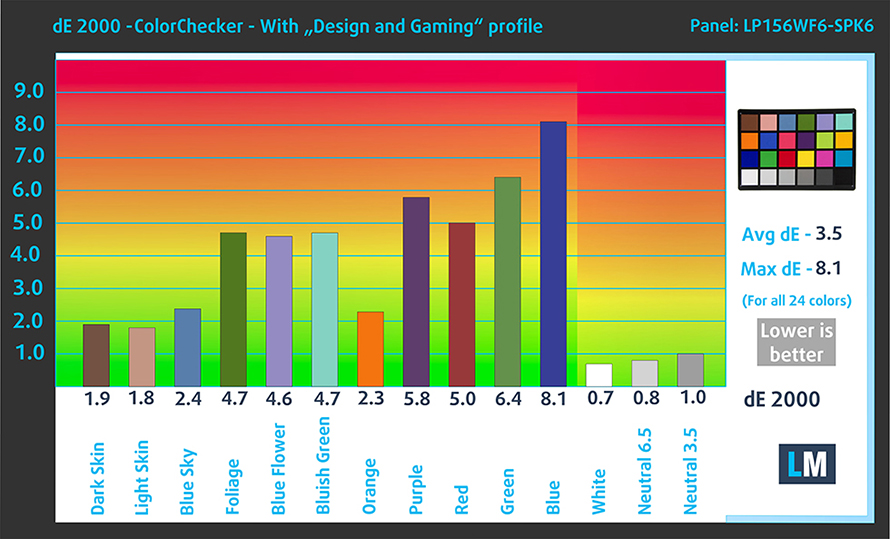










Why no words on temperatures? Did it overheat, didn’t it?
About the screen, ultrabookreview said that the same screen model (LP156WF6-SPK6) covered about 70% sRGB. How is it possible such big difference? Also, some american users reported backlight bleeding, did you notice any?
They also reported slightly worse sound than the VX (speakers are placed differently here). Stupid Acer should have just focused on improving existing models insted of giving us new crippled models like this or the ‘new’ nitro 5.
I’ve stated several times in the review that we didn’t test performance, temperatures and battery life because the sample we received had crippled performance – the CPU and GPU didn’t reach its clock speed and since the latter affects all of the above, we didn’t run our usual tests. Also, I’ve stated my concern about the cooling system due to the design of the fans, heat pipes and heatsinks. Secondly, we use high-grade professional hardware for measuring display properties and we stand by our results. We don’t know what our collegues from Ultrabookreview are using to get 70% sRGB. Anyway,… Read more »
I’m thinking of either buying this or the Lenovo Legion Y720. I noticed that the RAM on each is different, so I was wondering if RAM is customizable?
There is talk of the Y720 having a bad display for its age and price, and how does it compare to this model? (not really familiar with display specs)
Also, is the criticism on display quality kind of nitpicky? I’m upgrading from a Lenovo T410s, which both screens should be a significant upgrade from.
I am currently leaning towards the Y720, plus I get a discount on Lenovo Laptops.
mine also thinking to buying this laptop, but i want to see the thermal cooling first, and one more thing some ppl says helios 300 dont have metal 3d aero fan, is just regular plastic fan, is that right ? the metal fan just for triton 700 ?
When we will see a review of the Nitro 5 model?
Please update the review with the latest consumer model and its battery and temperature readings. The price seems to be fluctuating and I just can’t seem to pull the trigger when it is at 1049 and your updated review might help. Thanks.
I’m torn between getting this or the HP Omen 17. HP seems to have lower temperatures all round.